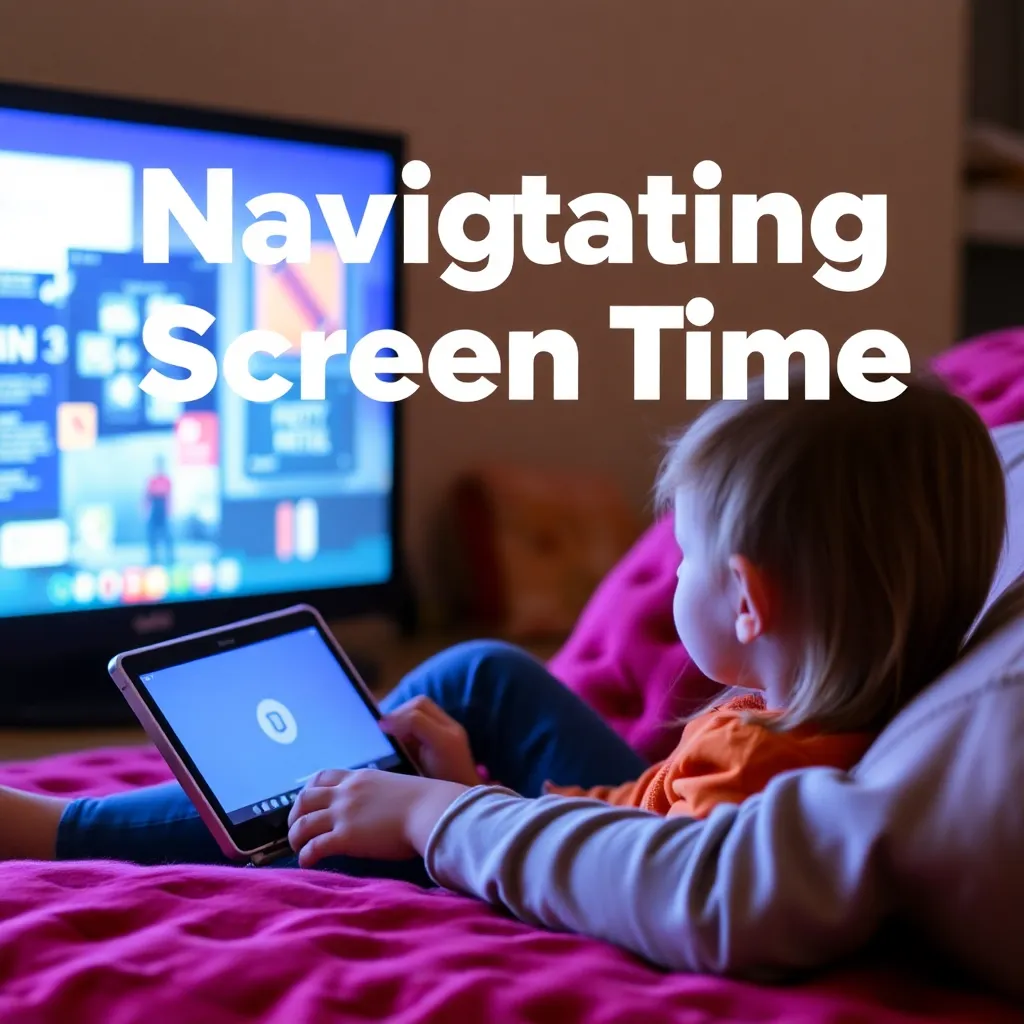In today’s digital age, screens are everywhere — from televisions to smartphones, tablets, and computers. While technology offers many benefits, excessive screen time can have negative effects on children’s health, development, and well-being. As parents, it’s crucial to find a balance between allowing screen time and setting healthy boundaries to ensure your child’s growth, learning, and social interaction are not compromised.
Here are some strategies to help you navigate screen time and establish healthy boundaries for your children.
1. Set Clear Screen Time Limits
Establishing daily or weekly screen time limits can help prevent overuse. According to the American Academy of Pediatrics (AAP), children aged 2-5 should have no more than one hour of screen time per day, while older children and teens should balance screen time with other activities like exercise, social interaction, and sleep. Setting these clear limits helps children understand that screen time is a privilege, not a constant.
Tip:
You can use parental controls or screen time monitoring apps to set daily time limits on devices. For older kids, encourage them to take responsibility for managing their screen time.
2. Encourage Quality Over Quantity
Instead of focusing solely on how much time your child spends on screens, it’s equally important to consider what they are watching or doing online. Encourage your children to engage with educational or interactive content that promotes learning and creativity. There are plenty of high-quality apps and programs designed to help kids develop new skills, rather than just passively consume content.
Tip:
Choose programs and apps that align with your child’s age, interests, and learning goals. Watch content together whenever possible to help your child understand what they are consuming.
3. Create Tech-Free Zones
Designating specific areas in your home as tech-free zones can help limit screen use. For example, bedrooms, mealtimes, and family gatherings can be screen-free spaces where the focus is on conversation, play, and relaxation. These boundaries teach children when it is appropriate to use screens and when it’s important to disconnect.
Tip:
Lead by example. When parents model tech-free behaviors, such as putting phones away during dinner or before bedtime, children are more likely to follow suit.
4. Balance Screen Time with Physical Activity
To ensure children are not spending excessive time in front of screens, it’s essential to balance it with physical activity. Encourage your kids to spend time outdoors, engage in sports, or participate in active play. A healthy balance between physical activity and screen time promotes both mental and physical health.
Tip:
Set a rule that screen time must be earned through active play or completing other responsibilities, such as homework or chores.
5. Be Mindful of Screen Time Before Bed
Excessive screen time, especially before bedtime, can interfere with sleep. The blue light emitted by screens can disrupt your child’s natural sleep cycle, making it harder for them to fall asleep. Establish a “no screens” rule for at least one hour before bedtime to promote better sleep hygiene and overall well-being.
Tip:
Consider creating a family charging station in the living room or kitchen where all devices are placed before bed. This helps prevent late-night screen usage and ensures a restful night’s sleep.
6. Promote Mindful Screen Use
Help your children understand the importance of being mindful when using screens. Discuss the potential risks of excessive screen time, such as eye strain, lack of physical activity, and social isolation. Encourage your children to use screens in a balanced way that supports their learning, creativity, and social interaction.
Tip:
Talk to your kids about the importance of taking regular breaks, practicing good posture, and limiting multitasking while using screens. Encourage activities that allow for creative expression, like digital art, storytelling, or coding.
7. Encourage Offline Social Interaction
While online communication and social media can be beneficial in staying connected, face-to-face interaction is crucial for developing social skills and emotional intelligence. Encourage your children to spend time with friends in person, engage in family activities, and participate in team sports or clubs.
Tip:
Organize regular family outings, game nights, or activities that foster social interaction and teamwork. These moments help strengthen relationships and allow for quality bonding without the interference of screens.
8. Set a Good Example
Children often mirror the behavior of their parents, so it’s important to set a positive example when it comes to screen time. If your child sees you constantly on your phone or watching TV, they may be less likely to follow the boundaries you set for them.
Tip:
Limit your own screen time when your child is around, and engage in activities that encourage creativity, learning, or physical play together. Be transparent with your child about your own screen habits and how you manage them.
Conclusion
Managing screen time for children is about finding a balance that works for your family. By setting clear boundaries, promoting quality content, and encouraging active play and social interaction, you can help your children develop a healthy relationship with technology. Ultimately, it’s not about eliminating screens altogether but about using them in a way that enhances, rather than detracts from, your child’s development and well-being.

